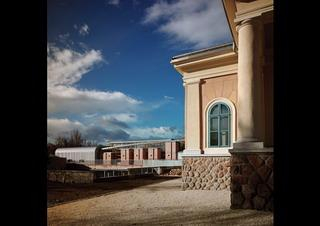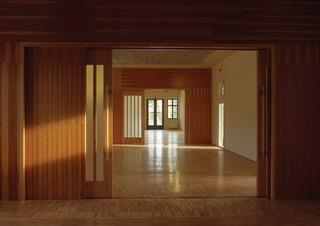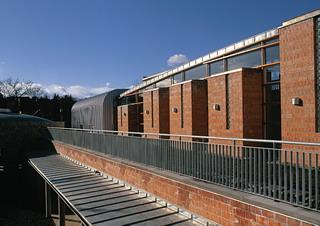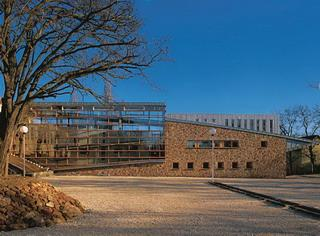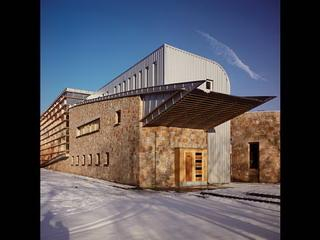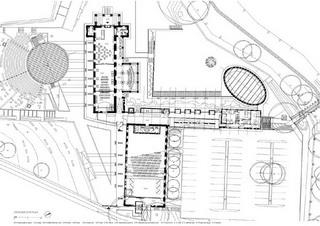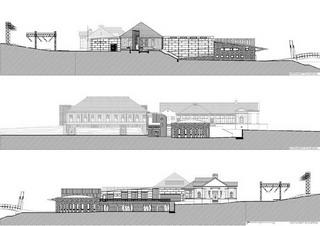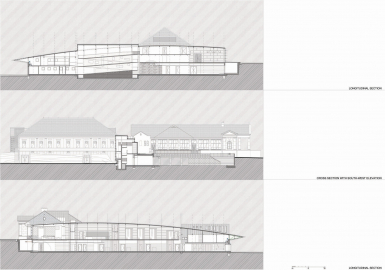Klebelsberg Cultural and Art Centre
We must not forget that it is not the sword but the culture that will upkeep the Hungarian homeland
Earl Kuno Klebelsberg, 1926
Klebelsberg Cultural and Art Centre Budapest, Pesthidegkút, Hungary
Dr. Erno Kálmán REALTERV Architectural Ltd.
The most important Hungarian cultural politician of the 20th century was Earl Kuno Klebelsberg, who was minister of religious and public education between 1922 and 1936. After the Trianon peace treaty he rebuilt the universities outside Budapest, established the European Collegium Hungaricum network, built 5000 public schools in 3 years and founded the Hungarian Olympic Committee.
His former mansion is located in Pesthidegkút, a historic building, like the nearby old village church. Nearby to these historic buildings are the historical surroundings of the past primary village school and the ramshackle building of the Forgách-Walla country house.
A few years ago the local people undertook the safeguarding of this group of buildings in view of drawing attention to the restoration of them. The architect was captivated by the spirit of the surroundings and trying to move things forward as a local patriot, organised festivals with artist fellows to draw attention to these local values, and then won competitive state support for the establishment of a Cultural Centre.
The aim of the construction is to develop a cultural centre in memory of the past cultural minister which:
- assures public educational missions based on the local cultural values,
- is a place for regional and European Union fora,
- is an accredited institution continuing the heritage of the Collegium Hungaricum together with the restoration of the nearby mansion.
The aim of the architect has been the safeguarding of values producing an equilibrium using progressive means, while the area of the resulting ensemble (2900 m2) is fourfold of that of the existing buildings (700 m2).
The resulting cultural forum of the commune, which was in 1950 administratively attached to Budapest, can be reached from two directions. The two perpendicular approaches intersect at the open theatre, used in summer for open-air festivals in the park.
The two historic buildings in the 1.1 hectare park have been joined by a new wing and ally in the same time the atmosphere of the old mansions and the modern architecture, linking past and present. The existing buildings: the primary school, a classicist building of the early 1800s with stone vaulted cellars and a well structured roof, and the early 19th century built mansion house, reconstructed several times, the vaulted cellars of which were horse stables.
Due to the site, the basement level of the two old buildings is at the level of the main entrance, which can be reached from the main road (Hidegkúti út) by a foot bridge, which can also easily be used by the handicapped habitants of the nearby residential park.
In the wing linking the two buildings is the ramped communication space which is also an exhibition area, in the elliptical space the library and in a metal box the administrative part of the centre.
In the building of the primary school is the multi-use room, which with its mobile, tilting floor can be transformed into a 300 seat theatre, but can also be used as a ball-room or conference hall.
The vaulted cellar functions as a club house. In the open-space mansion building are the local history museum, an exhibition space, the Klebelsberg memorial room, and below the tympanum a coffee terrace.
On the ground floor of the new part are study rooms, changing rooms and technical rooms, in the park, under the open-air theatre, sport and rehearsal rooms and changing rooms.
The open spaces have been created pulling down the long walls of the old school building and exposing the cellar walls. Opening up the space of the roof of the school building and equipping the area of the mansion with mobile wooden partition walls helped to create a flexible use of the space. The new wing was built using materials from the old walls, which are natural and puritan, stone, brick, architectural concrete, which intentionally contrasts with the building techniques using contemporary local materials.
A short history of Pesthidegkút:
Hidegkút (today Pesthidegkút) is a middle-age settlement. It is mentioned since 1292. At the beginning it is the dwelling of royal trumpeters, then the descendents of the lower nobility live there. From 1711 Germans are settled there, who live there in peace through nine generations, until their expulsion in 1946. In 1950 Hidegkút was administratively attached to Budapest.

